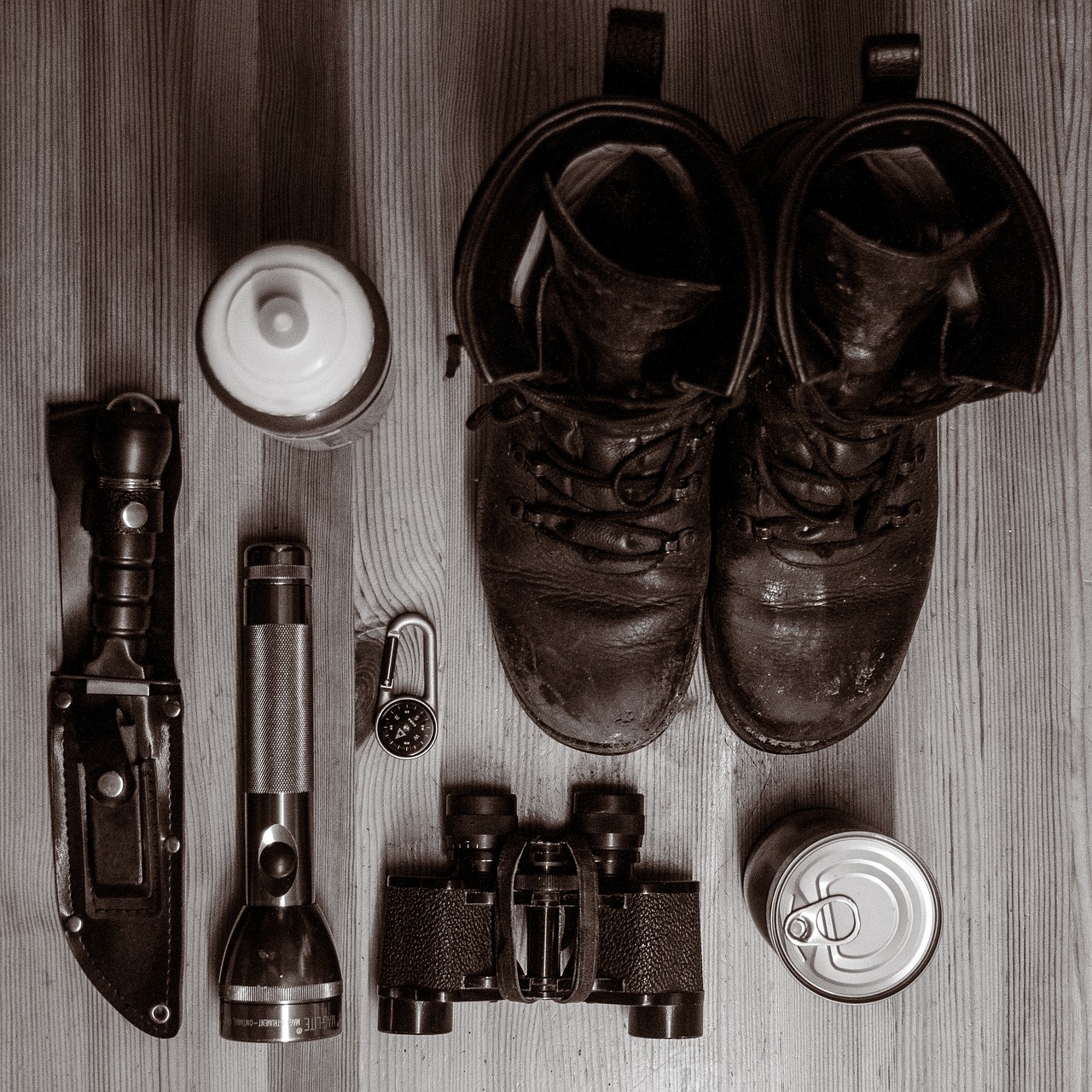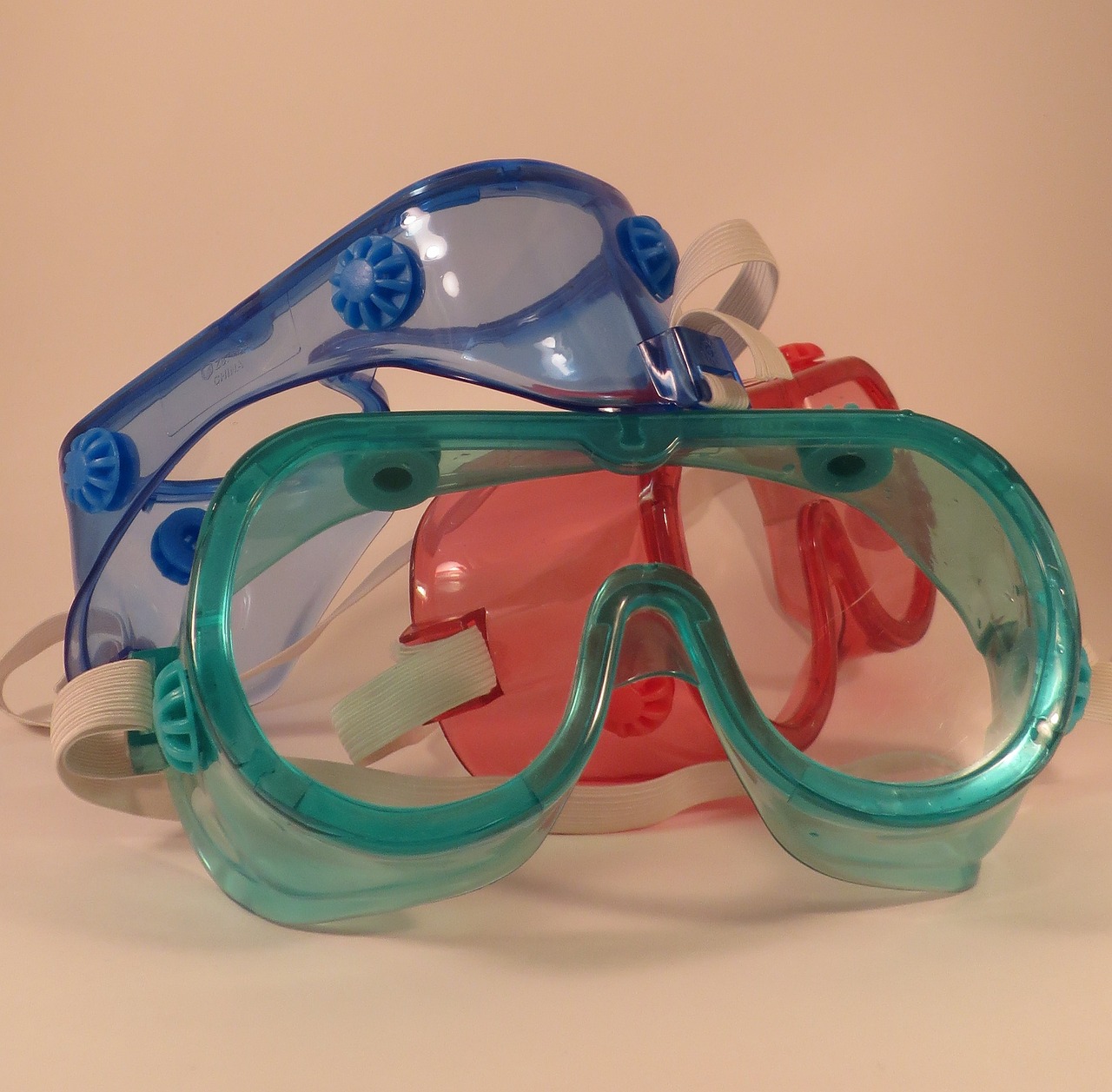Human Behavior: The Missing Piece in Designing Safety Measures
In today's fast-paced world, safety measures are often designed with a strong focus on technology and protocols, but what about the human element? Human behavior is frequently the missing piece in the puzzle of effective safety design. Understanding how people think, feel, and react can drastically alter the effectiveness of safety measures. It's not just about implementing rules or installing safety equipment; it's about creating an environment that considers the psychological factors driving human behavior. Let's dive into why understanding human behavior is crucial for enhancing safety measures.
When we think about safety, we often visualize hard hats, warning signs, and safety barriers. But the reality is that safety is just as much about the choices people make in the moment. Have you ever noticed how people sometimes ignore safety signs or take risks even when they know the dangers? This phenomenon can be attributed to various cognitive biases and emotional responses that affect risk assessment. For instance, individuals may underestimate risks due to overconfidence or may feel invincible in certain situations. Recognizing these biases is essential for designing safety measures that truly resonate with human behavior.
Moreover, the design of safety systems should not only focus on the physical aspects but also consider human factors engineering. This field emphasizes the importance of understanding human capabilities and limitations. For example, if a safety system is too complicated or requires too much cognitive load, individuals may struggle to use it effectively when it matters most. In high-stress situations, a cluttered interface or complex instructions can lead to errors. By simplifying design and aligning it with human behavior, we can significantly enhance safety outcomes.
As we explore the intricacies of human behavior in safety design, we must also consider the impact of cognitive load on decision-making. When individuals are overwhelmed with information or choices, their ability to make sound decisions can diminish. Think of it like trying to find your way through a maze while someone keeps adding more paths; it becomes increasingly difficult to navigate. In safety contexts, this overload can lead to mistakes that could have dire consequences. Therefore, it's crucial to design safety measures that minimize cognitive load, allowing individuals to focus on making the right decisions in critical moments.
Another vital aspect is the role of training and education. Effective training can not only improve knowledge but also help manage cognitive load. When individuals are well-prepared and understand safety protocols, they are more likely to respond appropriately in emergencies. Training should be engaging and relevant, incorporating real-life scenarios that individuals might face. This approach not only enhances safety awareness but also builds confidence, empowering individuals to act decisively in high-pressure situations.
Let's not forget about the significance of situational awareness. This concept refers to the ability to perceive and understand the elements in one's environment and how they relate to each other. In safety contexts, situational awareness can mean the difference between a close call and a tragedy. By enhancing situational awareness through training and intuitive system design, we can equip individuals with the tools they need to make informed decisions. Imagine being in a crowded space where a fire breaks out; those who are aware of their surroundings and understand the safest exit routes are far more likely to escape unharmed.
Lastly, we must consider the influence of social dynamics on safety behavior. People are inherently social beings, and their actions can be heavily influenced by those around them. Group behavior, peer pressure, and the culture within organizations can significantly impact safety compliance. For instance, if an employee sees their colleagues ignoring safety protocols, they may feel compelled to do the same. Understanding these social dynamics allows us to create safety measures that foster a culture of safety, encouraging individuals to look out for one another.
In conclusion, designing effective safety measures requires a comprehensive understanding of human behavior. By incorporating psychological insights, simplifying designs, enhancing training, and fostering positive social dynamics, we can create safety systems that not only protect individuals but also empower them to make safer choices. As we move forward, let’s remember that safety is not just about systems and protocols; it’s about people.
- Why is human behavior important in safety design? Human behavior influences how individuals perceive risks and respond to safety measures, making it crucial for effective safety design.
- What is cognitive load, and how does it affect safety? Cognitive load refers to the amount of mental effort being used in the working memory. High cognitive load can impair decision-making, leading to potential safety errors.
- How can training improve safety awareness? Effective training enhances knowledge and prepares individuals for real-life scenarios, boosting their confidence and ability to respond appropriately in emergencies.
- What role does situational awareness play in safety? Situational awareness allows individuals to understand their environment and make informed decisions, which is vital for effective safety responses.
- How can social dynamics impact safety behavior? Social dynamics, such as peer pressure and organizational culture, can heavily influence individual compliance with safety protocols.

The Psychology of Risk Perception
Understanding how individuals perceive risk is not just a matter of statistics or data; it’s a complex interplay of cognitive biases, emotions, and past experiences. Imagine walking on a tightrope stretched high above the ground. The fear you feel is not just about the height; it’s influenced by your previous experiences with heights, your innate fears, and even the reactions of those around you. This scenario illustrates the intricate web of factors that shape our perception of risk. When designing safety measures, acknowledging these psychological components is crucial.
One of the most significant aspects of risk perception is the role of cognitive biases. These are systematic patterns of deviation from norm or rationality in judgment. For instance, the availability heuristic leads people to overestimate the likelihood of events based on how easily they can recall similar instances. If someone has recently seen news reports about airplane crashes, they might perceive flying as more dangerous than it statistically is. This bias can skew the effectiveness of safety measures if individuals are not educated about actual risks versus perceived risks.
Emotional responses also play a vital role in how we assess risk. Fear, anxiety, and even excitement can cloud judgment, leading to either overly cautious behavior or reckless decisions. For example, in a workplace setting, an employee might ignore safety protocols because they feel confident in their abilities, despite knowing the risks involved. This disconnect between perception and reality can have dire consequences. Therefore, it’s imperative for safety designers to understand these emotional triggers and address them in their strategies.
Furthermore, social influences cannot be underestimated. The perceptions of risk are often shaped by the opinions and behaviors of peers. If a group of friends decides to engage in risky behavior, an individual may feel pressured to conform, even if they personally perceive the risk as high. This phenomenon is especially prevalent in workplace environments where organizational culture can either promote safety or undermine it. Safety measures must consider these social dynamics and aim to foster a culture of safety where individuals feel empowered to voice concerns and adhere to protocols.
To summarize, the psychology of risk perception is multifaceted, involving cognitive biases, emotional responses, and social influences. Recognizing these elements can significantly enhance the effectiveness of safety measures. By designing systems that account for how people think and feel about risk, we can create environments that not only protect individuals but also encourage them to engage in safer practices.
- What are cognitive biases? Cognitive biases are systematic patterns of deviation from norm or rationality in judgment, affecting how we perceive risks.
- How do emotions affect risk perception? Emotions like fear and anxiety can cloud judgment, leading to either overly cautious or reckless behavior.
- Why is social influence important in safety design? Social dynamics can shape individual behavior, sometimes leading to risky decisions based on peer pressure.
- How can safety measures be improved? By understanding psychological factors, safety measures can be designed to align with how people think and feel about risk.

When we talk about safety design, it’s easy to get lost in the technicalities—like the materials used, the engineering standards, and the regulatory compliance. However, human factors are often the unsung heroes or villains in the narrative of safety. Understanding human capabilities and limitations is crucial for creating systems that not only work effectively but also resonate with the people who use them. Imagine trying to fit a square peg into a round hole; that’s what happens when safety measures ignore human behavior. The goal is to ensure that safety designs are not just functional but also intuitive and user-friendly.
To illustrate this point, let’s consider a few critical aspects of human factors in safety design:
- Ergonomics: This involves designing tools and environments that fit the user’s needs. For instance, a poorly designed workstation can lead to physical strain, which not only affects productivity but can also increase the likelihood of accidents.
- Usability: Safety systems should be easy to understand and operate, especially in high-pressure situations. If a safety feature is complicated to use, it’s more likely to be ignored, rendering it ineffective.
- Human-Machine Interaction: The way humans interact with machines can significantly influence safety. Systems should be designed to minimize the potential for error, ensuring that the user can operate them with minimal cognitive load.
One fascinating area of study is how cognitive load impacts decision-making in safety scenarios. When individuals are overwhelmed with information or faced with too many choices, their ability to make effective decisions diminishes. This is particularly critical in emergencies where quick thinking is essential. Imagine being in a high-stress situation: if you have to sift through a complex set of instructions, the chances of making a mistake increase dramatically. Therefore, simplifying processes and providing clear, concise information can enhance safety outcomes.
Additionally, training and education play an indispensable role in bridging the gap between human factors and safety design. Proper training can reduce cognitive load by familiarizing individuals with safety protocols and systems. For example, regular drills can instill a sense of preparedness, making it easier for individuals to respond effectively during a real emergency. The more familiar someone is with safety procedures, the less cognitive effort is required when it matters most.
Another aspect worth considering is situational awareness. This is the ability to perceive and comprehend what is happening in one’s environment. High situational awareness allows individuals to make informed decisions quickly. In safety design, enhancing situational awareness can be achieved through clear signage, intuitive layouts, and effective communication systems. For instance, in a manufacturing plant, strategically placed indicators and alarms can alert workers to potential hazards, thereby improving their ability to react swiftly and appropriately.
In summary, human factors are a critical component of safety design that cannot be overlooked. By understanding how people think, behave, and interact with their environments, we can create safety systems that are not only effective but also user-friendly. The next time you encounter a safety measure, consider how it aligns with human behavior—does it empower users, or does it create barriers? The answer could very well determine its success.
Q: Why are human factors important in safety design?
A: Human factors are crucial because they help ensure that safety measures are designed with the end-user in mind, making them more effective and easier to use.
Q: How can cognitive load affect safety decisions?
A: High cognitive load can overwhelm individuals, leading to poor decision-making in critical situations. Simplifying processes and providing clear instructions can help mitigate this risk.
Q: What role does training play in safety design?
A: Training enhances familiarity with safety systems, which can reduce cognitive load and improve decision-making during emergencies.
Q: What is situational awareness?
A: Situational awareness is the ability to perceive and understand what is happening in one’s environment, which is vital for making informed decisions in safety contexts.

Cognitive load refers to the amount of mental effort being used in the working memory. In high-stress situations, such as emergencies, this load can significantly increase, leading to what we call "overload." When individuals are faced with too much information or too many choices, their ability to make sound decisions diminishes. Think of it like trying to juggle multiple balls while riding a unicycle; eventually, something's going to drop! This phenomenon can have serious implications for safety design, as overloaded individuals are more likely to make mistakes that could compromise their safety or the safety of others.
To illustrate, consider a scenario where a firefighter is responding to a blaze. They must quickly assess the situation, determine the safest approach, and communicate with their team—all while managing the chaos around them. If their cognitive load is too high, they might overlook critical details, such as the location of exits or the presence of hazardous materials. This not only puts their lives at risk but also endangers the lives of those they are trying to help.
So, how can we mitigate cognitive overload in safety designs? One effective strategy is to simplify the information that individuals need to process. This can be achieved through clear signage, intuitive layouts, and streamlined communication channels. For example, using color-coded systems or symbols can help convey important information quickly and effectively, reducing the cognitive burden on individuals in high-pressure situations.
Moreover, training plays a crucial role in preparing individuals to handle cognitive load. By simulating high-stress scenarios during training sessions, individuals can practice decision-making under pressure, which can enhance their ability to manage cognitive load in real-life situations. Think of it as a mental workout; the more you train your brain to handle stress, the stronger it becomes!
In summary, understanding the relationship between cognitive load and decision-making is vital in safety design. By recognizing how overload can lead to errors and implementing strategies to mitigate this risk, we can create safer environments where individuals are empowered to make better decisions, even under pressure.
- What is cognitive load? Cognitive load refers to the amount of mental effort being used in the working memory, especially in high-stress situations.
- How does cognitive overload affect decision-making? Cognitive overload can impair an individual's ability to make sound decisions, leading to mistakes that could compromise safety.
- What strategies can be used to reduce cognitive load? Strategies include simplifying information, using clear signage, and providing training that simulates high-stress scenarios.

Training and education are not just buzzwords thrown around in safety discussions; they are the backbone of effective safety measures. Imagine being in a high-stakes situation where every second counts. Wouldn't you want to be equipped with the knowledge and skills to make the right decision? That's where comprehensive training comes into play. It’s more than just checking off a box on a compliance list; it’s about instilling a culture of safety that empowers individuals to act decisively and effectively when it matters most.
Effective training programs should be designed to reduce cognitive load, especially in high-pressure environments. When individuals are overwhelmed with information, they are more likely to make mistakes. Therefore, training should be structured in a way that breaks down complex information into manageable chunks. This approach not only enhances understanding but also boosts confidence, allowing individuals to respond to emergencies with clarity rather than confusion.
Furthermore, training should incorporate realistic scenarios that individuals might encounter in their specific environments. For instance, a firefighter’s training will differ vastly from that of a factory worker. By simulating real-life situations, individuals can practice their responses, making them more prepared for actual emergencies. It’s like playing a video game: the more you practice, the better you get. In safety training, this practice translates to quicker, more effective responses in real-world situations.
Another critical aspect of training is the incorporation of feedback mechanisms. After training sessions, participants should receive constructive feedback on their performance. This not only helps them identify areas for improvement but also reinforces positive behaviors. Think of it as a coach guiding an athlete; without feedback, how can one improve? Regular assessments and refresher courses can help maintain a high level of safety awareness and preparedness, ensuring that individuals are always ready to act.
To further enhance the impact of training, educational materials should be engaging and accessible. Utilizing various formats, such as videos, interactive workshops, and online courses, can cater to different learning styles. This variety keeps the training interesting and ensures that participants remain engaged. After all, no one wants to sit through a monotonous lecture when they could be actively participating in a hands-on experience.
In conclusion, the role of training and education in safety design cannot be overstated. It’s about creating a knowledgeable workforce that feels empowered to make safe choices. By reducing cognitive load, incorporating realistic scenarios, providing feedback, and utilizing engaging materials, organizations can significantly enhance their safety protocols. As we continue to explore the intricate relationship between human behavior and safety design, it becomes clear that investing in training is not just beneficial; it’s essential for fostering a culture of safety.
- What is the primary goal of safety training? The primary goal is to equip individuals with the knowledge and skills necessary to respond effectively in emergencies.
- How can training reduce cognitive load? By breaking down complex information into manageable parts and using realistic scenarios, training can help individuals process information more easily.
- Why is feedback important in training? Feedback helps individuals identify strengths and areas for improvement, reinforcing positive behaviors and enhancing overall performance.
- What types of training formats are most effective? A mix of videos, interactive workshops, and online courses tends to cater to various learning styles and keeps participants engaged.

Situational awareness is like having a superpower in the world of safety. It’s the ability to perceive what’s happening around you and understand how it impacts your safety and decision-making. Imagine walking through a crowded street; if you're aware of your surroundings, you can dodge a cyclist or avoid stepping into a puddle. In high-stakes environments, such as construction sites or hospitals, this awareness can mean the difference between life and death. But why is it so crucial, and how can we enhance it?
At its core, situational awareness involves three critical components: perception, comprehension, and projection. First, you need to perceive the elements in your environment. This could be anything from recognizing a hazard to noticing changes in the behavior of those around you. Next, you must comprehend what these perceptions mean. For instance, if you see a worker operating machinery without proper safety gear, you need to understand the risks involved. Finally, the ability to project future actions based on your understanding is vital. If you know a storm is approaching, you might decide to secure loose items outside before the winds pick up.
Enhancing situational awareness can be achieved through various strategies. Training programs that focus on real-world scenarios can significantly improve an individual's ability to assess situations quickly and accurately. For example, simulation training allows individuals to practice responding to emergencies in a controlled environment, which can boost their confidence and reaction time in real-life situations. Moreover, integrating technology, such as augmented reality (AR) systems, can provide real-time data and alerts, thereby enhancing an individual’s ability to stay aware of their environment.
Additionally, fostering a culture of communication within organizations plays a significant role in improving situational awareness. When team members feel comfortable sharing information and reporting hazards, everyone becomes more attuned to potential risks. This leads to a collective awareness that can prevent accidents before they happen. Here are a few tactics to encourage this culture:
- Regular Safety Meetings: Hold discussions that allow team members to share experiences and insights.
- Feedback Mechanisms: Implement systems where employees can report unsafe conditions anonymously.
- Visual Cues: Use signage and color-coded alerts to draw attention to specific hazards.
In summary, situational awareness is not just a skill; it's a vital component of effective safety measures. By investing in training, leveraging technology, and promoting open communication, organizations can significantly enhance their safety culture. Remember, being aware of your surroundings is like having a safety net; it doesn't eliminate risks but gives you the tools to manage them effectively.
- What is situational awareness? Situational awareness is the ability to perceive and understand the elements in your environment and how they relate to your safety.
- Why is situational awareness important in safety? It allows individuals to make informed decisions and respond effectively to potential hazards, reducing the risk of accidents.
- How can I improve my situational awareness? You can enhance it through training, practice, and by being proactive in observing your surroundings.

When it comes to safety, we often think of individual actions and decisions, but social dynamics play a crucial role that cannot be overlooked. Have you ever noticed how your behavior changes when you're in a group? It's fascinating how the presence of others can influence our choices, often leading us to act differently than we would alone. This phenomenon is particularly evident in safety contexts, where group behavior can either enhance or undermine safety compliance.
One of the most compelling aspects of social dynamics is peer pressure. It can be a powerful motivator, pushing individuals to conform to the behaviors of those around them. For instance, in a workplace setting, if the majority of employees neglect safety protocols, a new hire might feel compelled to follow suit, even if they initially understand the importance of those measures. This creates a culture of risk-taking that can have dire consequences. Conversely, when safety is prioritized and reinforced by group norms, individuals are more likely to adhere to safety practices.
Additionally, the organizational culture within a workplace significantly influences how safety is perceived and acted upon. A culture that emphasizes safety as a shared responsibility fosters an environment where employees feel empowered to speak up about potential hazards. In contrast, a culture that downplays safety concerns can lead to a toxic environment where individuals hesitate to report unsafe conditions for fear of backlash or ridicule. This dynamic can create a cycle of negligence that ultimately compromises safety.
To illustrate this point, consider the following table that summarizes the impacts of different organizational cultures on safety behavior:
| Organizational Culture | Impact on Safety Behavior |
|---|---|
| Safety-First | Encourages open communication and adherence to safety protocols. |
| Negligent | Leads to risk-taking behaviors and reluctance to report hazards. |
| Reactive | Only addresses safety issues after incidents occur, fostering a blame culture. |
Moreover, the influence of social dynamics extends beyond the workplace. Consider how community norms shape individual behaviors in public spaces. For instance, if everyone around you is wearing a helmet while biking, you're more likely to wear one too, even if you initially thought it was unnecessary. This is a classic example of how social dynamics can promote safer practices through collective behavior.
In summary, understanding the influence of social dynamics on safety behavior is essential for designing effective safety measures. By fostering a positive organizational culture and leveraging peer influence, we can create environments where safety is not just an individual responsibility but a collective commitment. So, the next time you're considering safety protocols, remember to take a closer look at the social dynamics at play. They might just be the key to unlocking safer behaviors across the board.
- How can organizations improve their safety culture? Organizations can improve their safety culture by prioritizing open communication, providing regular training, and recognizing safe behaviors among employees.
- What role does peer pressure play in safety compliance? Peer pressure can either encourage safe practices when a positive norm is established or lead to risky behaviors when safety is not prioritized.
- How can individuals influence their peers' safety behaviors? Individuals can influence their peers by modeling safe behaviors, speaking up about safety concerns, and encouraging others to adhere to safety protocols.

Creating safety measures that promote positive behavioral change is not just a nice-to-have; it's a necessity in today's world. Think about it: how many times have you seen someone ignore safety protocols? It happens all too often, and the consequences can be dire. To effectively influence behavior, we need to delve into the psychology behind decision-making and understand what drives people to act (or not act) in certain ways. By incorporating behavioral insights into safety design, we can create environments that naturally encourage safer choices.
One of the key strategies in this realm is the use of nudges. These are subtle design elements that guide individuals toward making safer decisions without restricting their freedom of choice. For instance, consider the layout of a workplace. If safety equipment is placed in a convenient location, workers are more likely to use it. Similarly, visual cues, such as bright colors or clear signage, can grab attention and remind individuals of safety protocols. The idea is to make the safe choice the easiest choice, thereby reducing the cognitive load and potential for error.
Another effective approach is implementing incentives for safe behavior. When individuals receive rewards for adhering to safety measures, they are more likely to maintain those behaviors over time. This could be as simple as recognition programs or tangible rewards for teams that demonstrate exemplary safety practices. For example, a company could offer bonuses or extra time off for departments that achieve zero accidents over a specified period. Such incentives not only motivate individuals but also foster a culture of safety within the organization.
Moreover, it’s essential to recognize that behavioral change is a process rather than an event. It requires ongoing reinforcement and support. This means that safety measures should be continuously evaluated and improved based on feedback and observed behaviors. By creating a feedback loop, organizations can adapt their strategies to better meet the needs of their employees and the specific challenges they face in their environments. This iterative process ensures that safety measures remain relevant and effective.
In conclusion, designing for behavioral change involves a multifaceted approach that combines nudges, incentives, and continuous improvement. By understanding the psychology of decision-making and the social dynamics at play, we can create safety measures that not only protect individuals but also promote a culture of safety that resonates throughout the organization. After all, when safety becomes a shared value, everyone benefits.
- What are nudges in safety design? Nudges are subtle design elements that encourage individuals to make safer choices without restricting their freedom to choose.
- How can incentives improve safety compliance? Incentives motivate individuals to adopt safer practices by rewarding them for adhering to safety measures, fostering a culture of safety.
- Why is continuous improvement important in safety design? Continuous improvement allows organizations to adapt and refine their safety measures based on feedback and changing conditions, ensuring ongoing effectiveness.

Nudges are subtle yet powerful tools in the realm of safety design, acting as gentle pushes that guide individuals toward making safer choices without restricting their freedom. Imagine walking through a busy airport where the layout of the terminal naturally leads you toward the security checkpoint, rather than forcing you to navigate through a maze. This is the essence of nudges in action—design elements that shape our behavior in beneficial ways. By understanding the psychology behind decision-making, designers can create environments that promote safety through strategic nudges.
One of the most effective examples of nudges is the use of visual cues, such as arrows or colored pathways, that direct individuals toward exits in emergency situations. These cues can significantly reduce panic and confusion, ensuring that people evacuate quickly and safely. A study conducted in various public spaces found that when clear directional signs were implemented, evacuation times were reduced by as much as 30%. This simple yet effective change illustrates how nudges can have a profound impact on safety outcomes.
Another compelling example can be found in the realm of workplace safety. Consider a factory setting where workers are required to wear personal protective equipment (PPE). By placing PPE in easily accessible locations and using signage that emphasizes the importance of safety gear, companies can nudge employees toward compliance. A recent survey revealed that after implementing these changes, compliance rates for wearing safety gear increased by over 50%. This demonstrates that when safety measures are integrated into the environment, they become part of the routine, reducing the likelihood of accidents.
Moreover, nudges can also be applied through digital platforms. For instance, safety apps can send reminders or alerts about safety protocols, nudging users to engage in safer behaviors. These nudges can be tailored to individual behaviors, making them more effective. For example, a construction site app could notify workers to check their harnesses before starting work at heights, thereby reinforcing safety practices through timely reminders.
In summary, the implementation of nudges in safety design is not merely about making rules; it's about creating environments that encourage safe behavior naturally. By leveraging psychology and human behavior insights, designers can craft spaces and systems that promote safety effortlessly. As we continue to evolve our understanding of human behavior in safety contexts, the strategic use of nudges will undoubtedly play a pivotal role in enhancing safety measures across various domains.
- What are nudges in safety design?
Nudges are subtle design elements that influence behavior in a way that promotes safety without restricting freedom of choice. - How do nudges improve safety outcomes?
Nudges can guide individuals toward safer behaviors and decisions, often leading to quicker and more effective responses in safety-critical situations. - Can nudges be applied in digital environments?
Yes, digital platforms can utilize nudges through reminders and alerts to encourage safer practices among users. - Are there any real-world examples of successful nudges?
Examples include visual cues in public spaces that direct people during emergencies and workplace strategies that enhance compliance with safety gear requirements.

When it comes to promoting safety, one of the most effective strategies is to implement incentives that encourage individuals to adopt safer practices. Think about it: when you’re rewarded for doing something, doesn’t it feel more worthwhile? This is the core idea behind using incentives in safety behavior. By aligning personal interests with safety goals, organizations can create an environment where safety becomes a priority rather than an afterthought. But how do these incentives work, and what types can be most effective?
Incentives can take various forms, from monetary rewards to recognition programs. For example, a company might offer bonuses to employees who consistently follow safety protocols or achieve safety milestones. This not only motivates employees but also fosters a culture of safety where everyone feels responsible for maintaining a safe workplace. Additionally, recognition programs, such as 'Employee of the Month' for safety compliance, can significantly boost morale and encourage others to follow suit.
Moreover, it’s essential to understand that different people are motivated by different things. Some might respond well to financial rewards, while others might find value in public acknowledgment or additional time off. Thus, it’s crucial for organizations to tailor their incentive programs to meet the diverse needs of their workforce. A well-structured incentive program might include:
- Monetary Incentives: Bonuses or gift cards for safe practices.
- Recognition Programs: Awards or certificates for individuals or teams.
- Professional Development: Opportunities for training or advancement for those who adhere to safety protocols.
Furthermore, involving employees in the design of these incentive programs can yield better results. When workers feel that their input is valued, they are more likely to engage with the safety measures being implemented. This collaborative approach not only reinforces the importance of safety but also builds a sense of community and shared responsibility.
To illustrate the effectiveness of incentives, let’s look at a case study from a manufacturing company that introduced a safety incentive program. After implementing a system where employees received points for every month without accidents, which could be redeemed for various rewards, the company saw a remarkable 30% reduction in workplace incidents within the first year. This data showcases how well-designed incentives can lead to significant improvements in safety outcomes.
In conclusion, incentives for safe behavior are not just about rewarding compliance; they are about creating a culture where safety is prioritized and valued. By understanding what motivates individuals and tailoring incentive programs accordingly, organizations can foster an environment that not only enhances safety but also boosts overall employee engagement and satisfaction.
Q: What types of incentives are most effective for promoting safe behavior?
A: The effectiveness of incentives can vary, but options like monetary rewards, recognition programs, and opportunities for professional development have proven successful in many organizations.
Q: How can we ensure that our incentive program is fair and effective?
A: Involve employees in the design of the program, gather feedback regularly, and adjust incentives to meet the diverse motivations of your workforce.
Q: Can incentives lead to complacency regarding safety?
A: While incentives can enhance motivation, it's crucial to maintain ongoing training and communication about the importance of safety to prevent complacency.
Q: How can we measure the success of our safety incentive program?
A: Track metrics such as incident rates, employee engagement levels, and feedback from participants to assess the program's effectiveness and make necessary adjustments.
Frequently Asked Questions
- What is the significance of human behavior in safety design?
Human behavior is crucial in safety design because it directly influences how people interact with safety measures. Understanding the psychological aspects, such as risk perception and cognitive biases, allows designers to create more effective systems that align with how individuals think and act in real-life situations.
- How does risk perception affect safety measures?
Risk perception plays a vital role in safety measures as it dictates how individuals assess danger and make decisions. Factors like cognitive biases and emotional responses can skew this perception, leading to either overestimation or underestimation of risks, which ultimately impacts the effectiveness of safety protocols.
- What are human factors in safety design?
Human factors refer to the study of how people interact with systems and environments. In safety design, it encompasses understanding human capabilities and limitations to create systems that are intuitive, reduce cognitive load, and enhance overall safety, ensuring that users can operate them effectively even in high-stress situations.
- How does cognitive load influence decision-making in safety contexts?
Cognitive load can significantly impair decision-making, especially in high-pressure environments. When individuals are overloaded with information or stress, they may struggle to process critical information, leading to errors. Designing safety systems that minimize cognitive load can help individuals make quicker, more accurate decisions.
- What role does training play in enhancing safety awareness?
Training is essential for improving safety awareness as it equips individuals with the knowledge and skills needed to respond effectively to risks. Effective training methods can reduce cognitive load and enhance situational awareness, ensuring that individuals are better prepared to handle emergencies.
- Why is situational awareness important for safety?
Situational awareness is vital because it allows individuals to perceive and comprehend their environment, leading to better decision-making in safety scenarios. By enhancing situational awareness, individuals can identify potential hazards and respond appropriately, ultimately improving safety outcomes.
- How do social dynamics affect safety compliance?
Social dynamics, including group behavior and peer pressure, can significantly influence safety compliance. When individuals operate within a group, the behaviors and attitudes of their peers can either encourage or discourage adherence to safety protocols, impacting overall safety culture in organizations.
- What are nudges in safety design?
Nudges are subtle design elements that encourage individuals to adopt safer behaviors without restricting their choices. By strategically placing reminders or altering the environment, nudges can lead to improved safety outcomes, as they guide individuals toward making better decisions effortlessly.
- How effective are incentives in promoting safe behavior?
Incentives can be highly effective in motivating individuals to engage in safer practices. By offering rewards or recognition for compliance with safety measures, organizations can foster a culture of safety, encouraging employees and the public to prioritize safety in their actions.



















